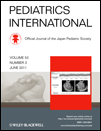Nebulized hypertonic saline and recombinant human DNase in the treatment of pulmonary atelectasis in newborns
Abstract
Objective: The aim of this study was to compare and evaluate the efficacy of nebulized 3% hypertonic saline (HS) and recombinant human DNase (rhDNase) treatment for resolution of persistent atelectasis in newborns.
Study design: Forty newborns (38 preterms) who did not respond to conventional treatment were enrolled to receive either nebulized 3% HS solution (n = 20) or rhDNase (n = 20) between September 2007 and March 2008. Clinical parameters, oxygen saturation and radiological response (chest X-ray scoring) were analyzed before and after administration of 3% HS or rhDNase.
Results: The patients of the nebulized 3% HS solution group improved better chest X-ray scores parameters than the patients of the rhDNase group: chest X-ray scores were 5.1 ± 1.9 vs 4.8 ± 1.7 before treatment and 1.0 ± 0.8 vs 2.1 ± 1.4 after treatment (P < 0.001). Resolution time of atelectasis did not differ between the two groups after whole treatment but the percentage of atelectasis resolution after 3 days treatment were 90% (18/20) in the 3% HS group and 70% (14/20) in the rhDNase group. The patients in the 3% HS group improved better also in clinical parameters in comparison to the rhDNase treatment. The difference of oxygen saturation before and after the treatment was 4.6 ± 0.8 in 3% HS group in comparison to 2.6 ± 0.1 in the rhDNase group (P < 0.05). All serum sodium levels were normal in two groups before and after the treatment modalities.
Conclusion: This is the first study on the usefulness of nebulized 3% hypertonic saline solution in treating newborns with pulmonary atelectasis. In addition, 3% HS solution was a more effective therapeutic option on the basis of clinical and radiological improvement compared to rhDNase treatment in newborns with pulmonary atelectasis.




